Bat Facts – Everything You Need to Know
18 min read Updated for March, 2019
There are many negative misconceptions about bats, but these tiny mammals perform several integral roles in their ecosystems. They eat pesky insects, pollinate plants, spread seeds, and fertilize crops. Though bats can occasionally present a health risk to humans, bats provide an overall net good for our environment and are worth protecting.
DIY BAT REMOVAL
How To Get Rid of Bats
Bat Problem?
Bat Sounds
There are none of the screeching or shrieking sounds from bats that Hollywood portrays. In fact, bats are very quiet using echolocation to navigate their surroundings, which—if human ears can pick up—comes across as clicking sound. If there are enough of them, you may hear them chirping at dusk.
Bat Tracks
As a flying mammal, it is very rare to come across bat tracks; bats are usually discovered by the telltale buildup of bat guano (droppings) on the side of the house of near holes and crevices.
Bat Poop
Bats tend to leave their waste in a pile near the entrance of their nesting spot, which is how you’ll know you have an issue. Bat droppings are similar in size to grain of rice, but longer and pretty much odorless. They don’t harden (like rodents) and may include undigested insects. But if crushed becomes powder, which allows for easier transmission of disease.
Bats usually only have one pup per litter.
About Bats
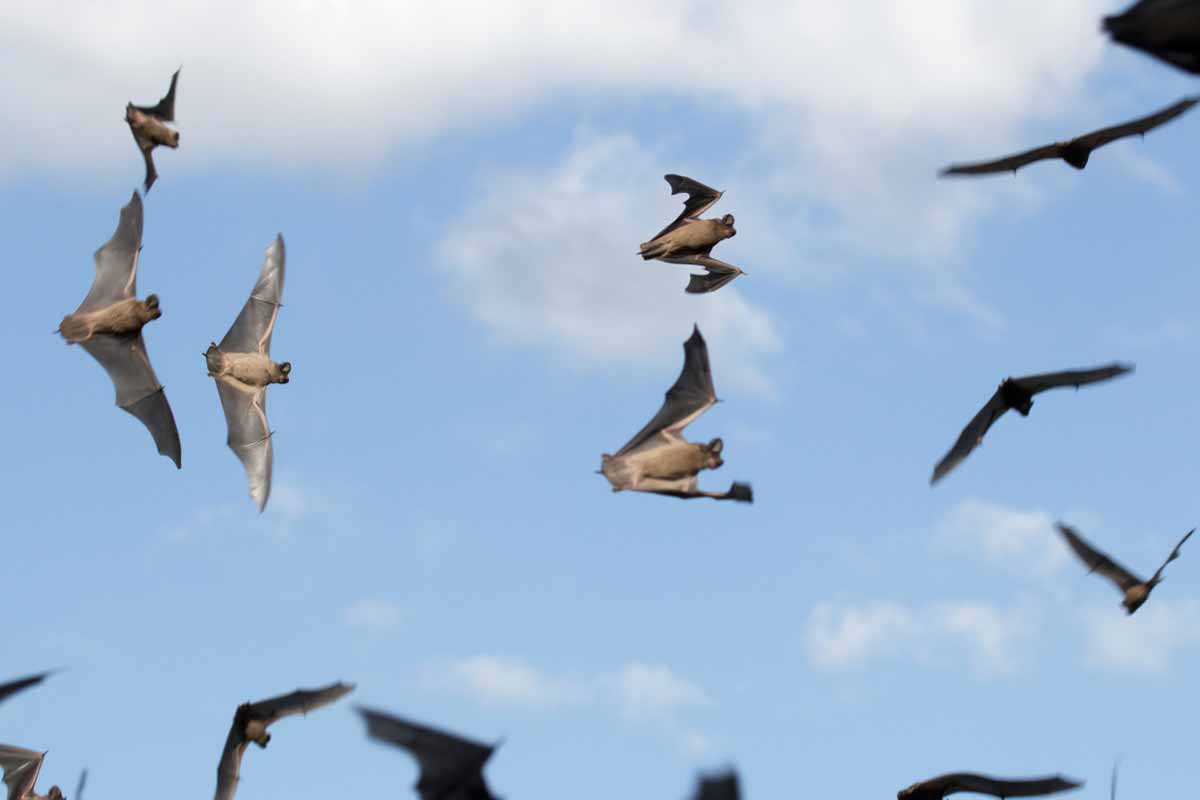
Bats have inspired folklore for generations thanks to their nocturnal nature, unusual appearance, and the ability of one species to drink blood. However, bats share much in common with their fellow mammals and rarely harm humans. Here are some basic facts about bats.
- While bats are often mistaken for birds, they are in fact mammals just like human beings. They are warm-blooded, covered in fur, and give birth to live babies that they nurse with milk.
- Bats are nocturnal. They are born with a unique ability called echolocation that allows them to project sound waves into their environment and to “hear” objects when the waves bounce off of them. These waves, known as ultrasound, are too high for humans to hear.
- Bats feed on insects, vertebrates, fruit, and even blood, depending on the species. Blood-sucking bats are far less common than other varieties, even though they’re perhaps the most well-known variety. The majority of bats consume insects.
- Bats are the only flying mammals. They’re built with light, thin bones similar to those of human fingers, covered with a flexible membrane called a patagium. Unlike flying squirrels, bats are capable of sustained flight, not just gliding short distances.
- Some bats are loners, while others live in large colonies in caves or human-made shelters.
- Bats usually only have one pup per litter. These pups can be extremely large—up to 40 percent of the mother’s weight—and typically fly about 18 days after birth.
- Due to their high metabolism and the energy needed for flight, bats eat a high number of calories to maintain their body weight. Some insect-eating bats can eat up to 120 percent of their body weight in one night of hunting.
- Bats roost by hanging upside down and wrapping their large wings around themselves to preserve body height.
- Some bats hibernate during the winter, usually in caves, while other species migrate to warmer locales
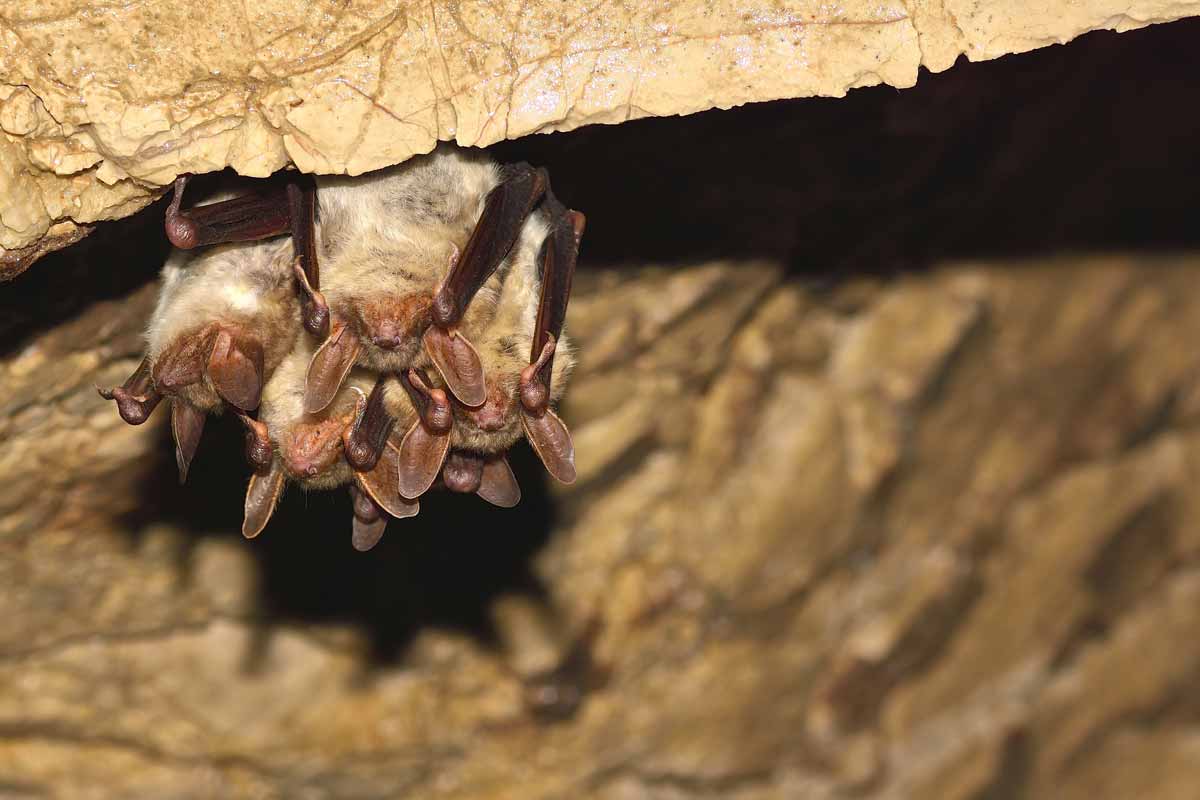
Nectar-eating bats have evolved with long furling tongues that help them drink the nectar of these plants.
Ecological Benefits of Bats
Because of their reputation for being “creepy” or “scary,” the ecological importance of bats is often overlooked. However, these small mammals help control pest populations, pollinate plants, spread seeds, and increase biodiversity overall.
Reducing Unwanted Insects
If you live in an area with a large mosquito presence, you’ll understand the benefit of bats right away. These flying creatures can consume up to 1,000 mosquitoes an hour, making them one of the most efficient ways to manage this nuisance insect. In addition, they control mosquito populations without the use of any damaging insecticides, making them a great boon for farmers and homeowners alike. Bats also eat beetles, flies, moths, gnats, and other unwanted bugs.
Pollination
Many species of plants depend exclusively on bats for pollination. These plants are usually large night-blooming flowers found in deserts or tropical climates in Africa, Asia, and the Pacific Islands. Nectar-eating bats have evolved with long furling tongues that help them drink the nectar of these plants. While they drink the nectar, the pollen from these flowers sticks to their fur and then spreads to the next plant they touch, facilitating the pollination process. Because their anatomy’s explicitly developed for drinking nectar, these pollinator bats cannot eat other types of food, making them more vulnerable to extinction if their habitat is threatened.
Seed Dispersal
Fruit bats, also known as megabats for their larger body size, help support biodiversity by spreading seeds from the fruit they consume. These bats eat the flesh of the fruit while spitting out most of the seeds and pulp. Because they also carry the fruit back to their roost to consume it, they redistribute the seeds, helping to plant more trees.
Fertilization
Bat feces is known as guano, and many gardeners consider it one of the most potent fertilizers in the world. It’s effective because it’s naturally packed with nutrients like nitrogen, phosphorus, and potassium, all of which can help plants grow. Also, the waste is completely natural and does not easily wash out of the soil. It can also improve dirt texture and drainage. As helpful as it is to plant life, guano should be handled carefully—preferably by a professional—since it can contain bacteria that are harmful to humans.
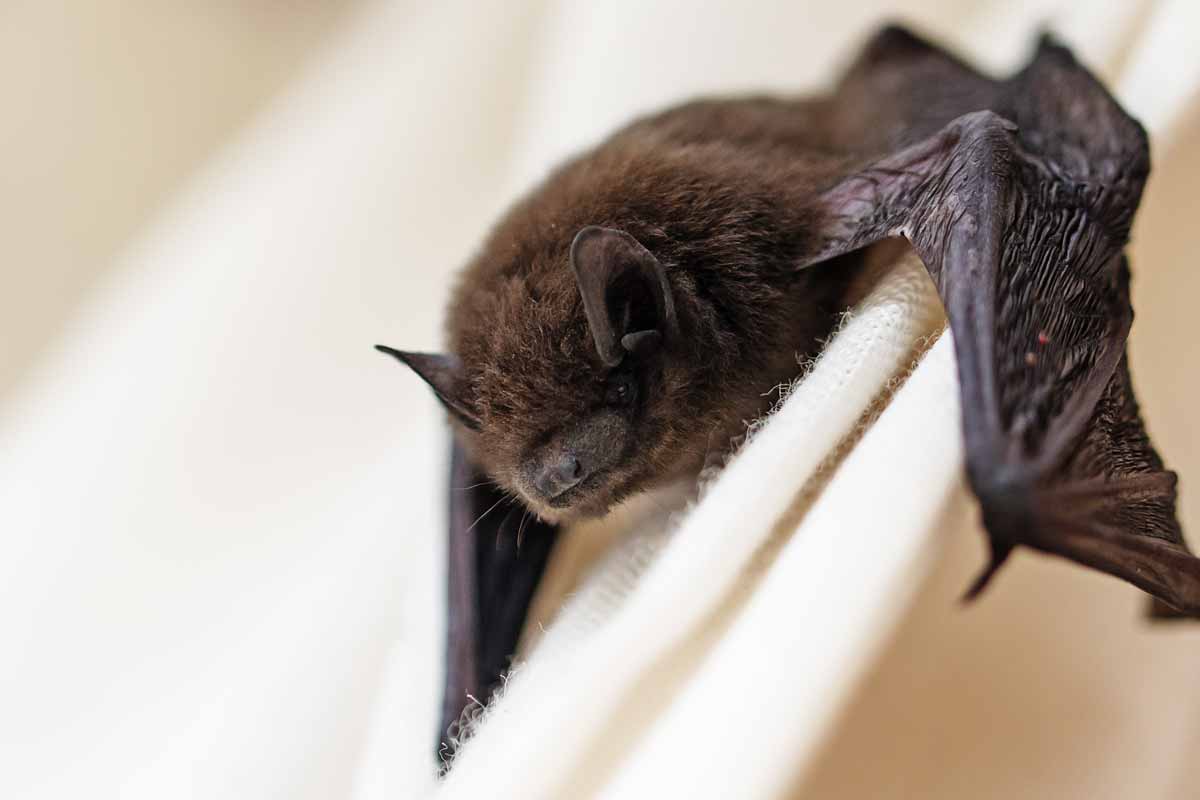
Big brown bats are especially valued thanks to their tendency to eat bugs that are agricultural pests.
Types of Bats in the U.S.
Over 1,200 species of bats exist worldwide, which means that these furry critters make up roughly one-fifth of all mammals. Here are a few of the most common species of bats in North America.
Little Brown Bat
These petite bats eat mostly mosquitoes and are therefore most likely to be found near water sources. They range throughout North America and usually reach two to four inches in length. While they were formerly the most common bat in the U.S., a disease called white-nose syndrome has recently drastically reduced their numbers.
Big Brown Bats
These slightly larger bats usually measure between four and five inches in length. They’re also common throughout the country and are important predators of larger insects. Big brown bats are especially valued thanks to their tendency to eat bugs that are agricultural pests.
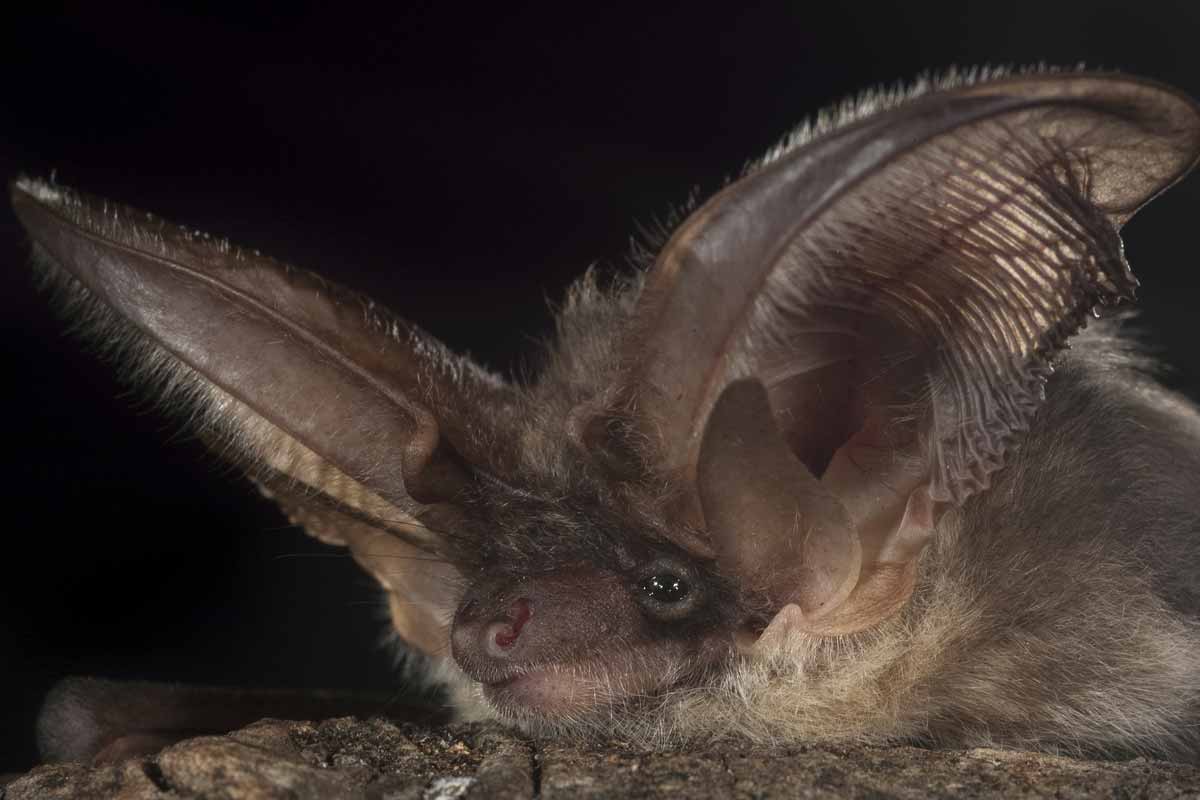
Pallid Bats
Pallid bats have large, translucent ears and pale fur and typically reach four to five inches in length as adults. They’re more commonly found in western areas of the country, as pallid bats prefer a drier habitat. Pallid bats also eat insects, including poisonous desert scorpions.
Mexican Free-Tailed Bats
These bats are named after their noticeable tales and their tendency to migrate from the U.S. to Mexico during the winter. They tend to live in large colonies in caves, are more common the Southern U.S., and are known for helping control insect populations.
Bats prefer to roost in the cracks or hollows of old trees.
Do Bats Carry Rabies?
The risk of contracting rabies from bats is overstated. Scientists estimate that less than one percent of bats carry rabies. However, though it’s extremely rare, it is possible for rabid bats to infect human beings. Never approach or handle a bat, especially if it’s behaving abnormally: flying around in the daytime, entering homes, or appearing visibly sick or weak. These are all signs that the bat is infected with rabies. Also, bats have extremely small and sharp teeth, which means that people may not notice their bites at all. For this reason, you should always seek medical attention if you’ve come into close contact with a bat—for example, if you’ve found one in your home—whether or not you’ve noticed a bite.
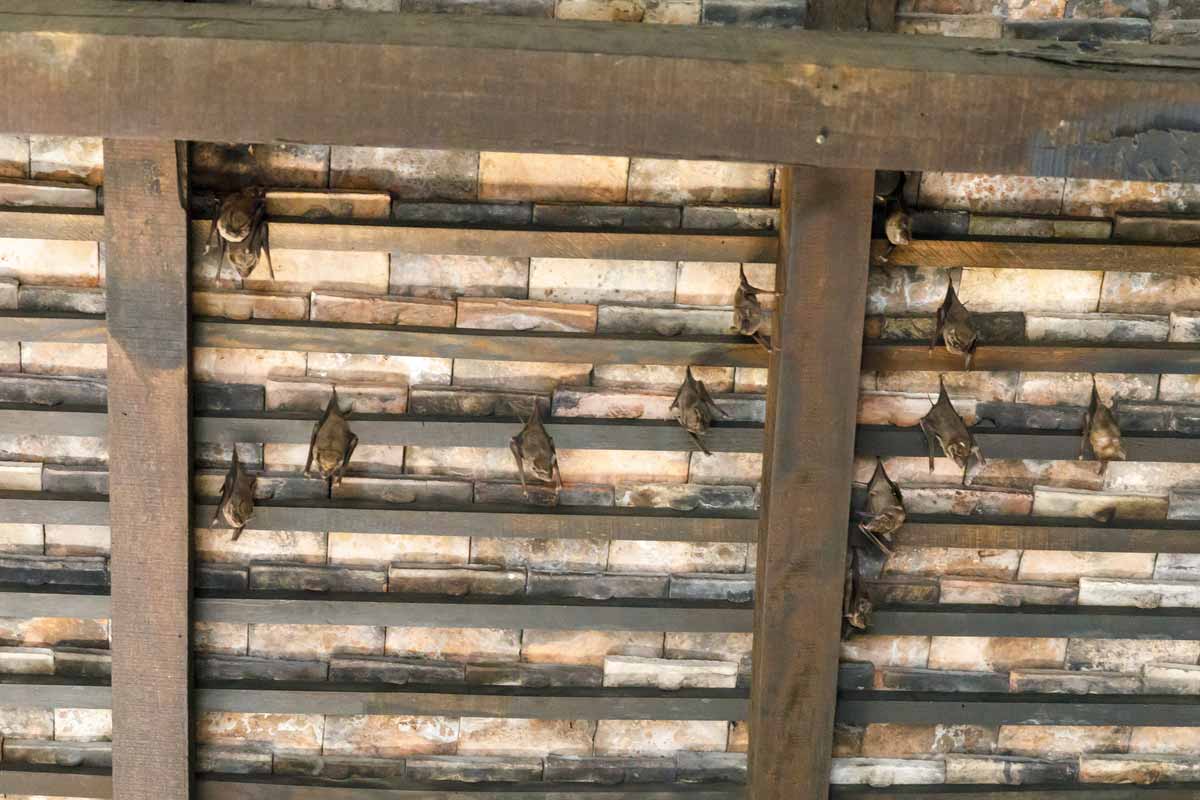
What if I Find Bats in My Attic?
As wonderful as they are to have in your garden or yard, bats inside the home are never good news. Bats can increase your risk of contracting rabies and expose you and your family to dangerous bacteria through their droppings. If you’ve noticed bats coming and going in your attic, or you’ve heard a scratching or flapping noise in your walls, make sure you contact a professional instead of attempting to resolve the situation yourself. These experts can help remove the bats, seal the area to prevent future entry, and clean up any harmful waste.
Bats prefer to roost in tight, narrow spaces above the ground.
How to Attract Bats to Your Yard
Now that you’ve learned all the benefits of having bats in your environment, you may want to make your yard friendlier for these furry creatures. Here are a few steps you can take to make your backyard inviting for bats.
Build a Bat House
Bats prefer to roost in tight, narrow spaces above the ground. They often make homes in the small space between a tree and its loose bark, for example. So if you’re looking to welcome more bats to your yard, building a bat home may make it more hospitable. These wooden structures, similar to birdhouses, create small crevices that mimic those found in nature. Websites like the National Wildlife Federation offer tutorials on how to build and install your own bat house. You can also find a wide variety of store-bought bat houses online or at your local garden supply store.
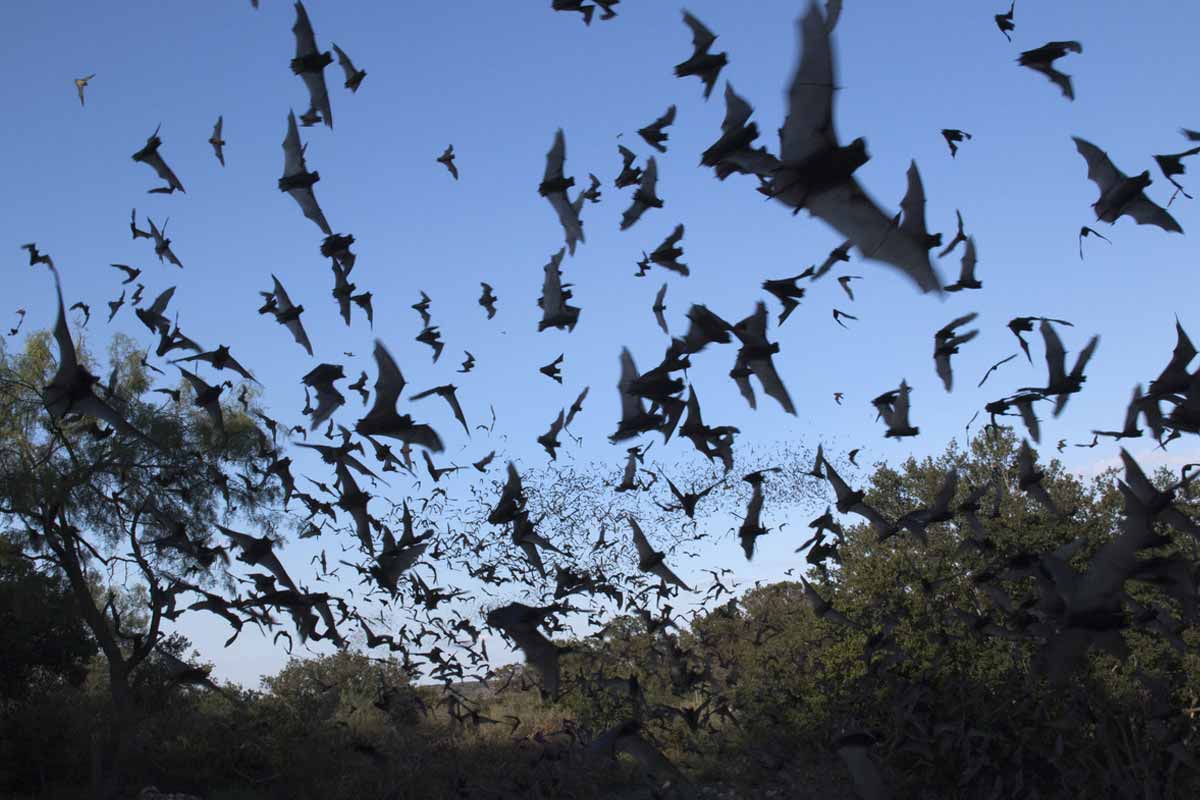
Plant Native Species
Make sure you preserve some of your yard’s natural plant varieties, as these are probably the primary fare of local bats. Many need a variety of flowers or fruits to thrive. By planting native species, you’ll also help attract insects, which will then attract insectivorous bats.
Leave Dead Trees Standing
If you’re not up for building a bat house, you can leave dead trees in your yard standing and let these provide a natural habitat for bats. Bats prefer to roost in the cracks or hollows of old trees, so refrain from cutting these trees if you want to grow your bat population.
Provide a Water Source
Bats, like all mammals, need water and are more likely to roost near a lake, pond, or river. If the location of your house is not near a body of water, consider creating your own. A large birdbath may be all you need to make your yard more attractive to bats.
Conclusion
Bats provide critical services for our ecosystems, including controlling unwanted insects, pollinating plants, and increasing biodiversity. While it’s important to avoid handling bats or their droppings directly, having a healthy bat population near your home can help improve your yard and surrounding ecosystem at large.
Sources
https://www.nps.gov/subjects/bats/benefits-of-bats.htm
https://www.nps.gov/subjects/bats/echolocation.htm
https://www.fs.fed.us/wildflowers/pollinators/animals/bats.shtml
https://batworld.org/rabies-info/
https://www.nwf.org/en/Garden-for-Wildlife/Cover/Build-a-Bat-House
https://www.bhg.com/gardening/pests/insects-diseases-weeds/attract-bats-for-organic-insect-control/
https://www.mnn.com/your-home/organic-farming-gardening/blogs/how-to-attract-bats
https://en.wikipedia.org/wiki/Little_brown_bat
https://www.livescience.com/28272-bats.html
https://www.csu.edu/cerc/researchreports/documents/BatsActivityGuide.pdf
https://www.thisoldhouse.com/ideas/north-american-bats
https://en.wikipedia.org/wiki/Big_brown_bat
https://en.wikipedia.org/wiki/Pallid_bat
https://en.wikipedia.org/wiki/Mexican_free-tailed_bat